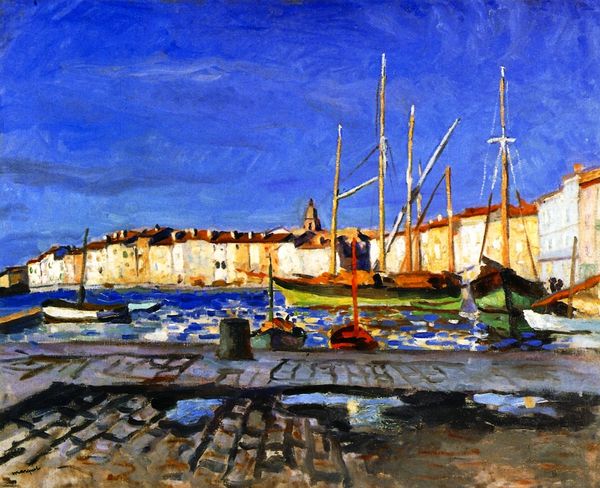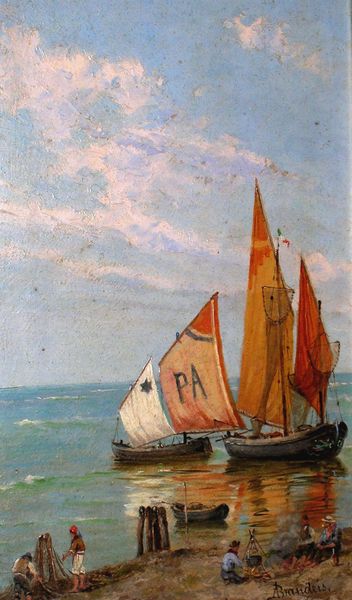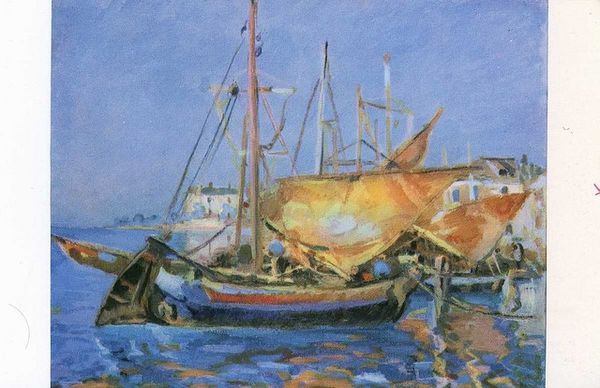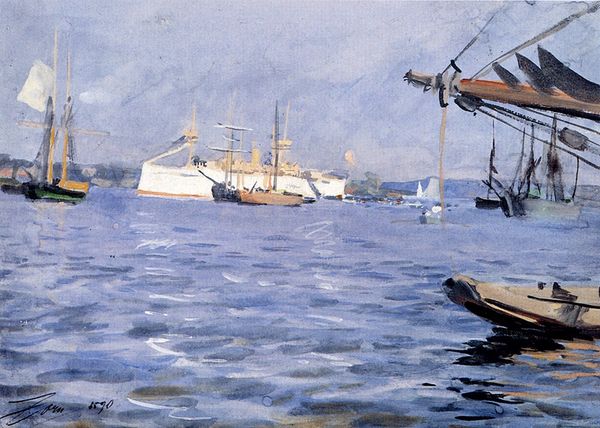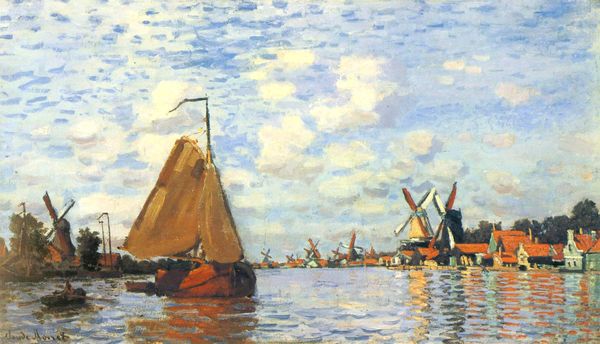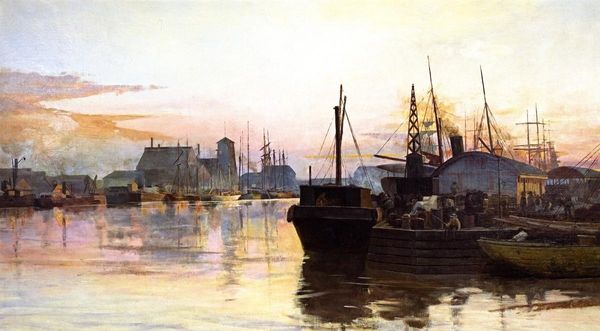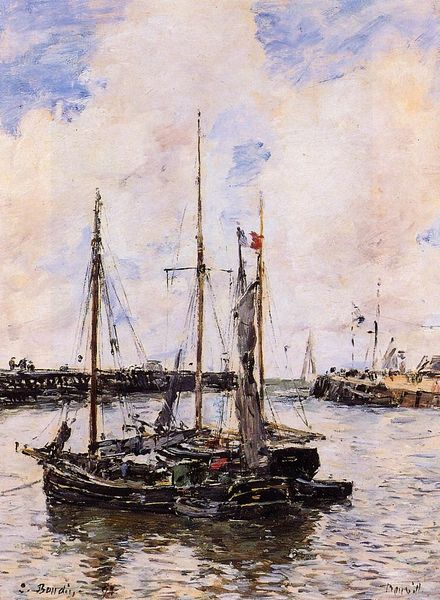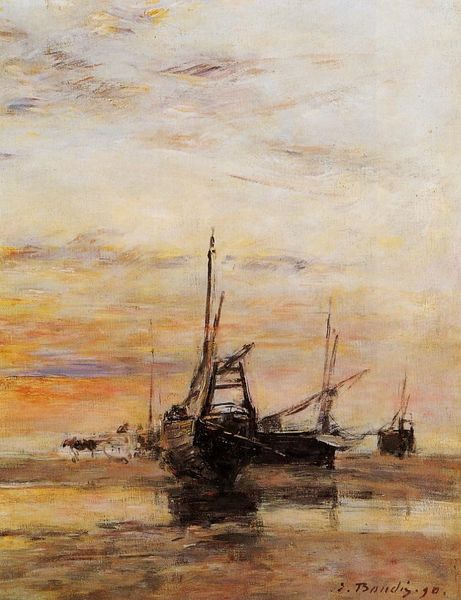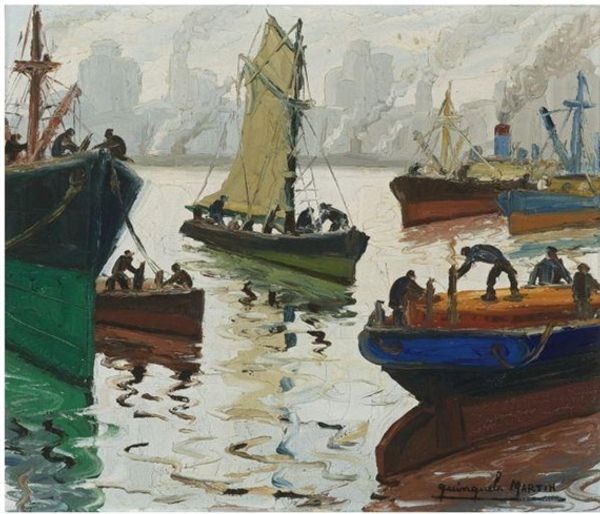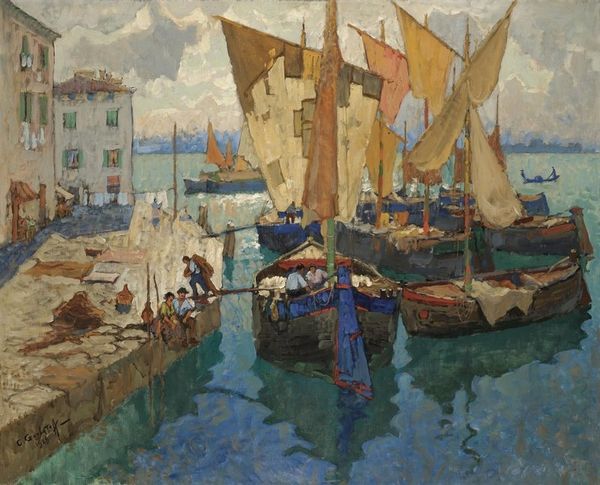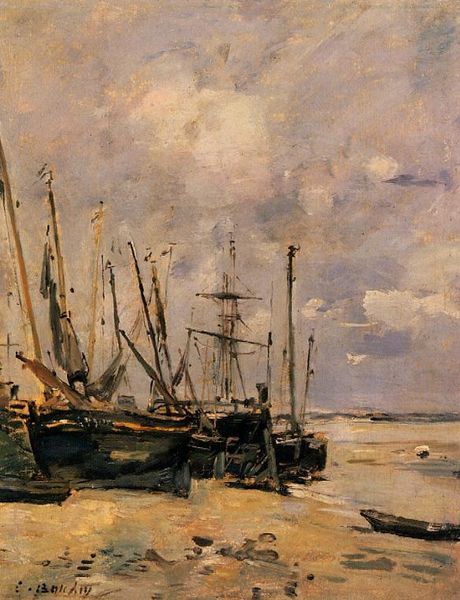
Copyright: Public domain
Curator: Welcome. Let’s consider Clarence Gagnon’s 1928 oil painting, "San Giorgio Maggiore from the Giudecca, Venice". Editor: Immediately, it strikes me with its incredible energy. Look at that almost aggressive use of blue, offset by the bursts of red and orange! The surface looks built up, like the paint itself has substance. Curator: Gagnon situates us on the Giudecca, allowing us a particular vantage point, one shaped by its history as a space of both pleasure gardens and prisons. The composition emphasizes class and identity; traditionally, depictions focus more on the Doge’s Palace. Editor: Interesting! The boats in the foreground dominate, yet it feels less about commerce and more about… leisure, maybe? What about the application? See how the paint is applied in such distinct, visible strokes? I want to know what kind of brush he used! Curator: Absolutely. This Impressionist approach is interesting in that it almost dissolves the specific labor narratives—the fishermen, the builders, even the identities tied to San Giorgio Maggiore itself—into this broader play of light and color. How complicit is the painter? Editor: A fair challenge. Looking at the docks, you sense the build-up of layers – of varnish, perhaps, or multiple coats of paint echoing the layers of history and work that saturate Venice. Maybe those vibrant colors betray something overlooked; those structures are dependent on very real and exploitative conditions. Curator: I appreciate how you foreground materiality. Gagnon was definitely tapping into a modernist tourist market here, selling the beauty and romance, even while sidestepping complex political realities within the urban space itself. It mirrors contemporary travel, then and now: how often do we see without truly understanding what we’re seeing? Editor: Perhaps. And still the visceral pleasure of that blue remains. It reminds me to stay grounded, examining art’s connection to physical means, as a site of both social consequence and incredible potential. Curator: And it’s right to find that joy while remaining aware of art's relationship to societal issues. This work lets us ponder history, perception, and even our own roles as active, conscious viewers within these intersectional stories.
Comments
No comments
Be the first to comment and join the conversation on the ultimate creative platform.
